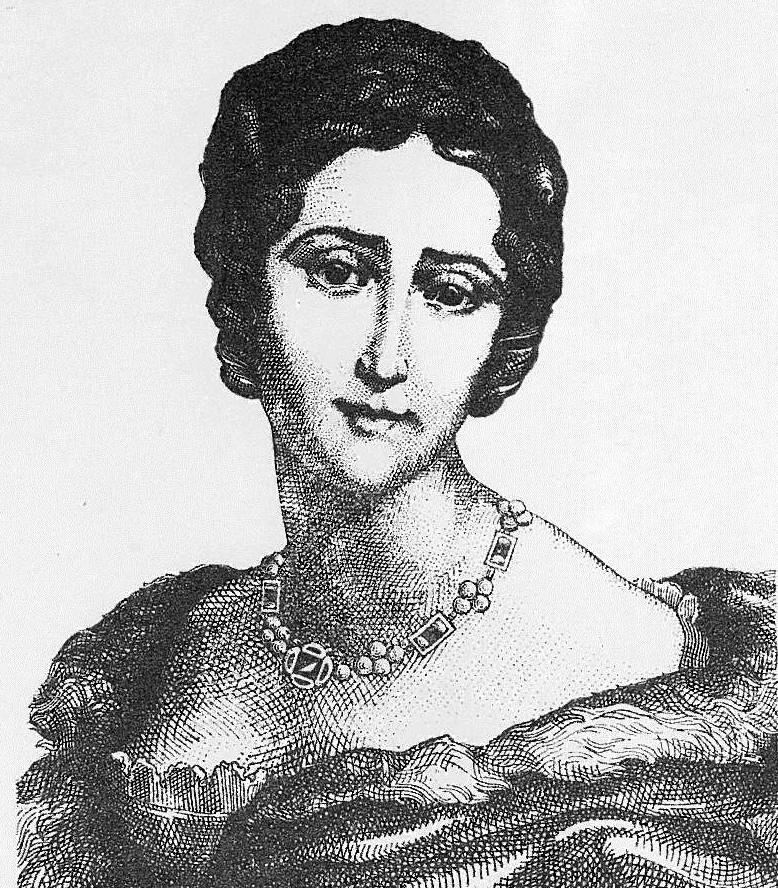Scheda
Among the women to remember in the XIX century Bologna, it can certainly count Cornelia Barbara Rossi (1771-1867), wife of Giovanni Battista Martinetti, Swiss architect who moved to our city to follow his father and then stayed here to complete his studies and later for his work as architect and urban engineer.
She also attended the Casino Company, as wife of a partner, and she was in the Dance and Music Committee. Cornelia was born in Lugo in 1781 by Count Domenico Rossi and Marianna Gnudi, a noblewoman from Bologna. She received an excellent education at the College of Nobles of Modena and from talented teachers, including a great Bolognese XIX century figure, Cardinal Giuseppe Mezzofanti. His studies were purely humanistic even though the historical period saw decisive cultural developments in relation to tradition. The Countess could speak the four main European languages, she could make some conversation in Latin and she knew a lot about music and was a master of coquetry. She married Giovanni Battista Martinetti in 1802: her husband was seventeen years older than her and he was, as mentioned before, a talented architect and engineer (among its achievements: Villa Spada; Villa Aldini; the reorganization of Montagnola, the project for the Theater Contavalli; the project for the new road Porrettana, which connected Bologna with Florence and many more). After the suppressions of the Napoleonic period, Giovanni Battista Martinetti acquired the ancient monastic complex of Benedictine Sisters in via San Vitale (now at n° 56) with the annexed crypt of the church of Santi Vitale and Agricola. Thanks to its creativity, the whole complex was transformed into a gorgeous and very bizarre home, which he gave to his beautiful and young wife. The convent's garden was transformed into a large English garden adorned with neoclassic statues, fountains, columns and temples immersed in rich vegetation; the ancient romanic crypt with three semicircular apses became a cave with fake stalactites. This gorgeous home was destined to become one of the most popular and celebrated cultural salons in Europe until the years of the Pontifical Restoration. The charming and brilliant Countess Cornelia opened the doors to the best talents of her time, often resulting in the muse. Ugo Foscolo, for example, assigned him the role of one of the three Graces in the poem and also Antonio Canova was a victim of her charm: he is said to have tried to sculpt a torso, but then destroyed it because he could not completely reproduce the lady's legendary beauty. Other illustrious guests of the living room and victims of his enchantment were Giacomo Leopardi, Stendhal, Byron and – as murmured - Napoleon Bonaparte himself. As in all the worldly parlours, even in Cornelia's one frivolity and poetry resounded, they flirted, scoffed, contracted. The ecclesiastical authorities never accepted that the crypt had been changed into a pro Bonaparte hometown, and they criticized the Countess very hardly.
As a learned and elegant woman, she was also author of a novel: Amélie (published in Rome in 1823). After her husband died in 1830, she was struck by an eye disease that made her almost blind and her public appearances became less frequent, not to ruin the memory of his beauty and because she could no longer support the role of guest. Her attention to the parlour culture was always high, in fact in a letter from 1843 to the Marquiste Matteo Conti Castelli (kept at the Piancastelli Collezione di Forlì), she writes: ... I dare to feel Bologna so little animated! What a pity! Bologna owns all the elements to be able to get a brilliant company and worthy of a capital. The distinguished and very educated ladies are many in Bologna (...) but what is missing is the meeting center, and a beautiful home that is open to receive, unite, and give in order to get to know and love each of us!! French writer Louise Colet delivers us a Cornelia intense portrait, as she often met her in his 1860s Bolognese parlour: "She is still wonderful, her unmistakable beauty resists her longevity, she has grown old harmonically as Mrs. Rècamier said:”her gaze is always lively, her charming smile, her flexible and graceful Greek nose. I have never seen better and sweeter features". Years later, after his death in 1867, the famous garden was separated from the XIX century parcels, the crypt returned to a worship place, the palace moved to others owners (now Scagliarini Rossi). The remembrance of Cornelia's charm continues to flourish in the city and perhaps it is just what she herself would have wanted. She rests in the monument dedicated to her husband, located in the Loggia di Ponente of the Certosa of Bologna. The epigraph dedicated to her remembers: “In this same tomb that she erected in perpetual memory of her beloved husband, also lies the Countess Cornelia Martinetti born of Rossi of San Secondo. From a patrician Lugo family, who, genial and desired guest, gathered in his house the most illustrious men of the century, not only from Italy but from Europe. Born in Lugo in MDCCLXXXI - dead in Bologna in MDCCCLXVII.
Translation by Giancarlo Caramadre, Associazione Amici della Certosa di Bologna.







